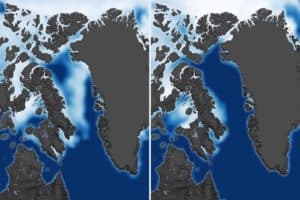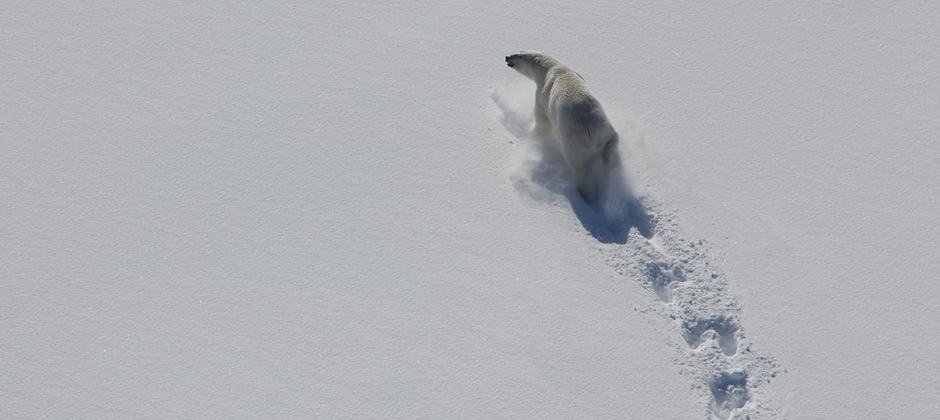Share this article
Less Baffin Bay sea ice means skinny bears, fewer cubs
Decreasing sea ice cover related to climate change is leading to thinner polar bears and smaller cub litters on Canada’s Baffin Island.
“This adds to a growing body of evidence that sea ice has serious and long-term consequences for polar bears,” said Kristin Laidre, an associate professor at University of Washington and the lead author of a study published recently in Ecological Applications.
The Baffin Bay polar bear (Ursus maritimus) subpopulation shifts between western Greenland and Baffin Island, spending their winters on the ice and their summers on terra firma on Baffin Island. The governments of Canada and Greenland wanted to learn more about these bears in order to set better harvest rates for the indigenous communities who partly rely on the animals for subsistence.
Laidre and an international group of researchers from Canada and Greenland studied the effect of decreasing annual sea ice cover on polar bears in this subpopulation.

Sea ice in mid-July in the 1990s (left) still spanned Baffin Bay, providing polar bears with a large area to hunt and travel. In more recent summers (right), Baffin Bay was mostly open water in mid-July, and polar bears were stuck closer to shore. ©Joshua Stevens, NASA Earth Observatory/National Snow & Ice Data Center
They collared 38 female bears with GPS collars, and collected mark-recapture data and visual observations from 2009 to 2015. They compared this data to similar information taken on 43 bears from 1991 to 1997.
The team found that that while the bears spent about 60 days on land in the 1990s, they were spending 90 days on land in the more recent study period.
These bears usually depend on the sea ice for hunting seals, which make up the bulk of their yearly diets. Laidre and her co-authors found through fat analysis that less sea ice led to skinnier bears in this subpopulation.
Annual sea ice cover also had an effect on average cub litter size.
“Larger litter sizes occurred when mothers were in good condition, with more fat,” Laidre said, but that was in times with more sea ice. As sea ice decreased, so did litter size.
Projecting future sea ice conditions based on the past two decades, the team found that two-cub litters will likely become less common moving forward.
While this study was conducted on the Baffin Bay bears, the results could be relevant to other polar bear subpopulations Laidre said.
“All indications suggest that we’re on a trajectory towards an ice-free Arctic, so we can expect these sorts of trends to show up in other polar bear populations as well,” she said.
Header Image:
A polar bear is seen from the air in Baffin Bay, West Greenland in 2012.
©Kristin Laidre/University of Washington








